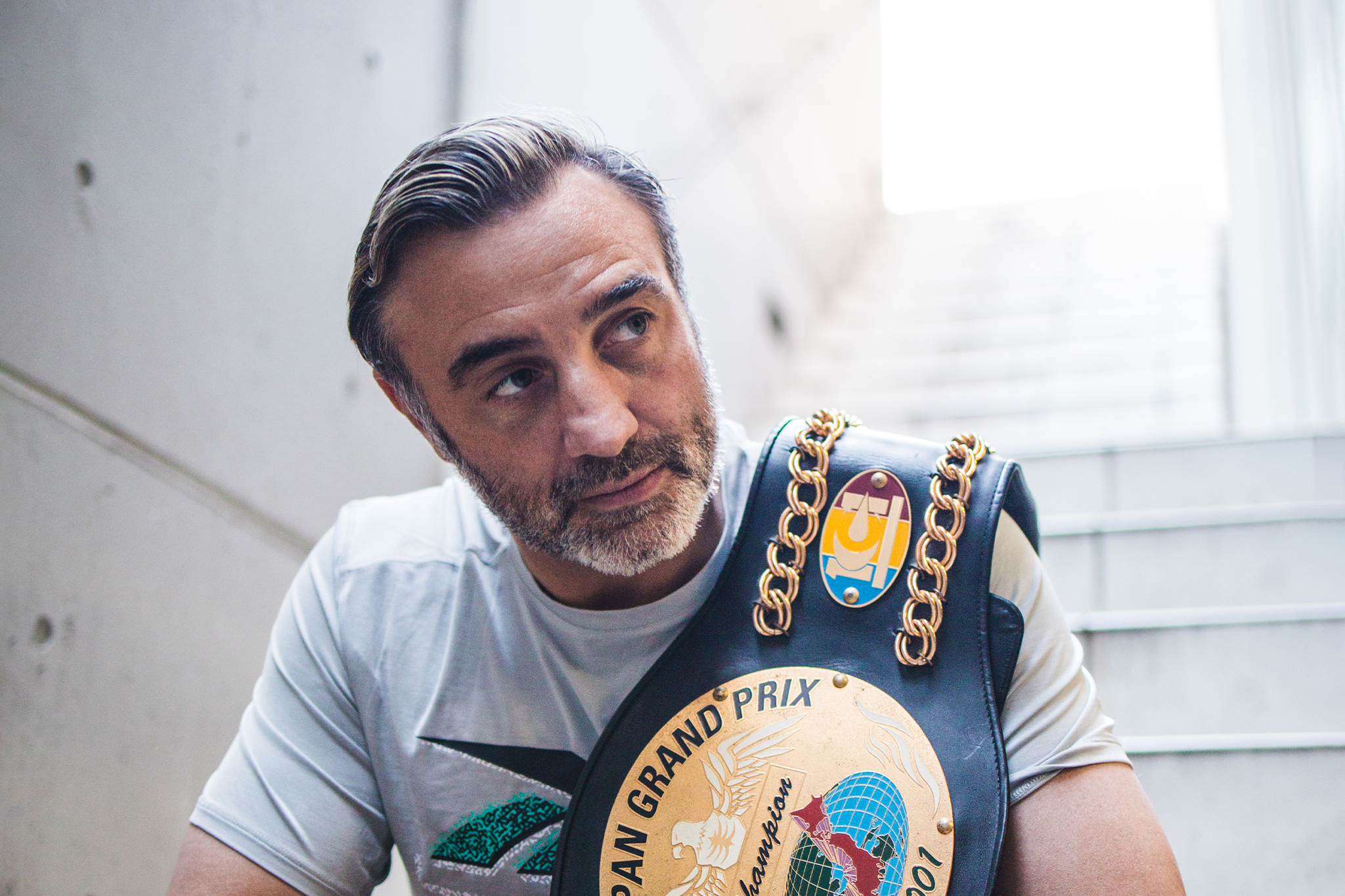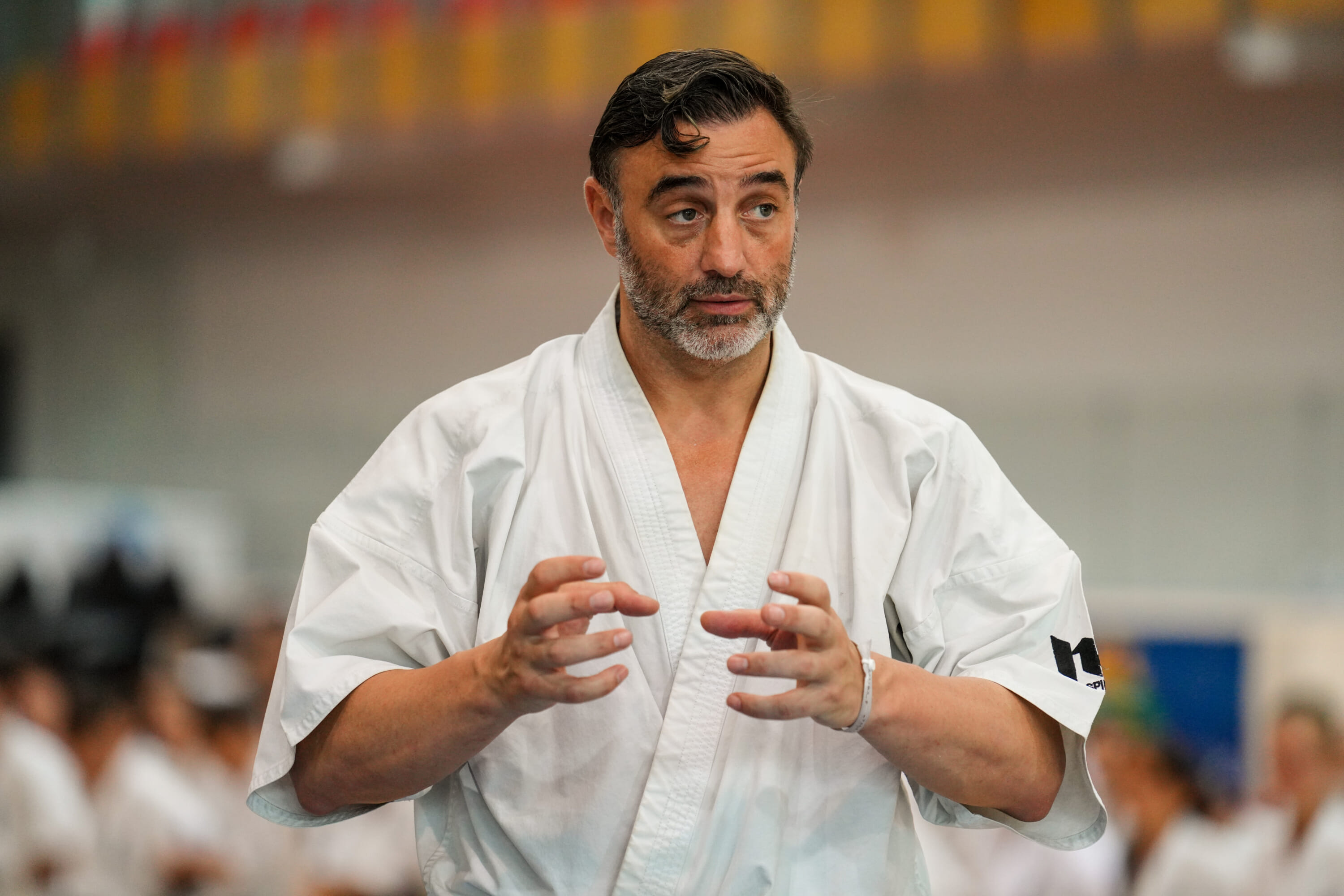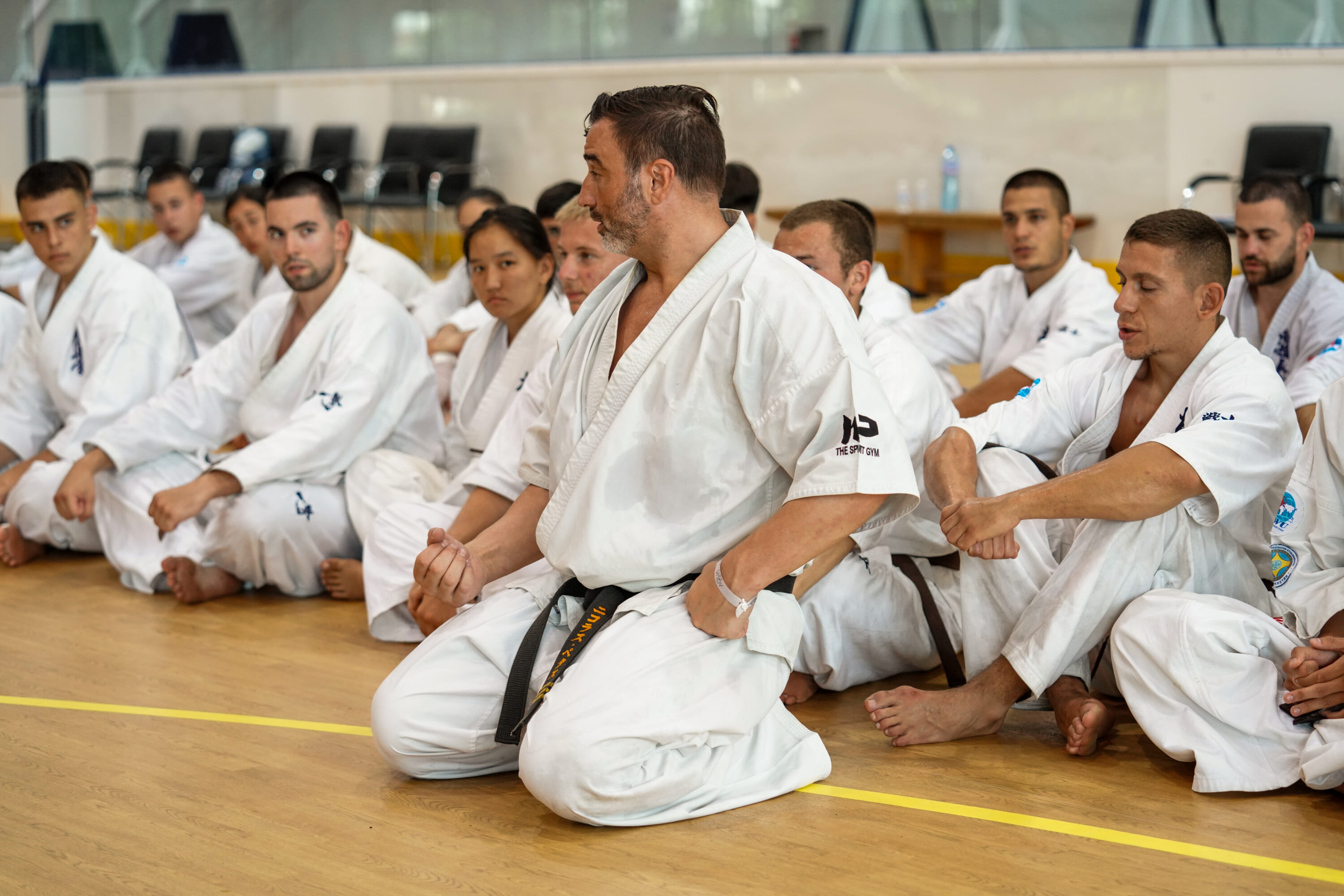The story of Nicholas Pettas’ rise to European karate champion starts like a movie: A teenage altercation while DJing at a party leads the defenseless boy to learn karate to protect himself. But Pettas went on to do much more, relocating to Japan and becoming one of the first foreigners to complete the rigorous 1,000-day uchi-deshi (live-in student) training under Masutatsu Oyama (1923–1994) — Sosai to his students — the founder and master of Kyokushin karate.
With this experience, Pettas became European Kyokushin karate champion. He then went on to become a K-1 champion, an actor on the hit Japanese drama Change (2008) and, today, a business owner and YouTuber. TW met with Pettas at his CrossFit gym to learn more about his journey.
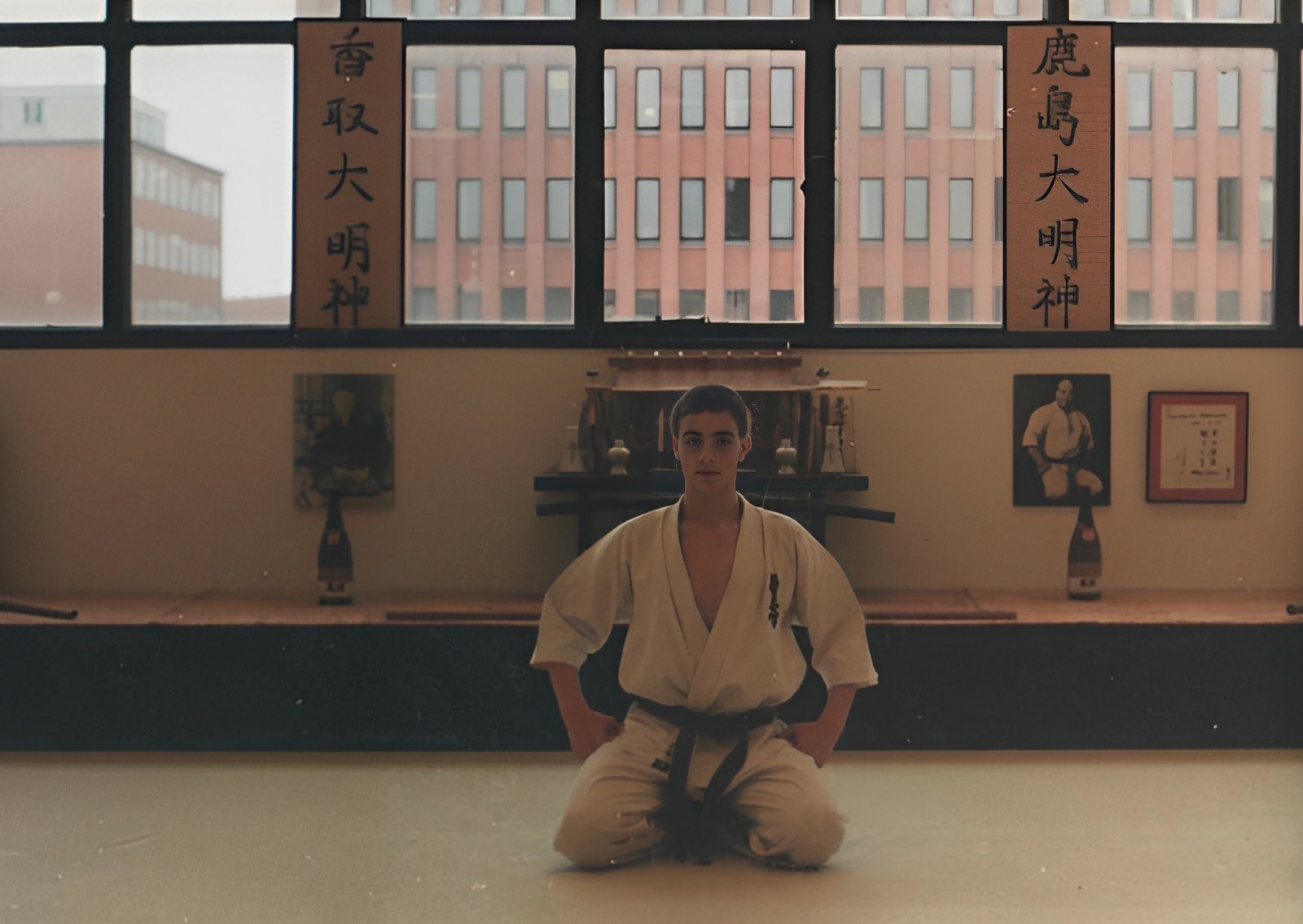
Seiza pose in front of Shinden in Denmark | Photo by Nicholas Pettas
After starting Kyokushin karate training in Denmark and then discovering the practice of uchi-deshi, did it become your goal to be the first foreigner to complete the training?
Yes, and I had no idea other foreigners were there. This was before the internet, so there was no information at all. I had no idea what I was walking into.
How did you feel when you received your acceptance letter to the uchi-deshi program?
I ran into the black belts’ room and tried to open it neatly, without tearing the paper. When I opened it, I thought, “Woah.” My heart was gone and already in Japan.
Sosai was an iconic figure that you looked up to — but only as a black-and-white picture at home. What was it like meeting him in person?
The day I met Sosai, he was sitting at his desk, and he slowly rose up, like a big bear, and said, “Welcome to Tokyo.” I was gone. I immediately started shaking. He shook my hand and touched my chin and greeted me. We talked with the help of a translator, and he told me to look up to him as a father and mentor and to come to him if there was anything wrong. In exchange, he wanted me to train hard and go back to Denmark and become his arms and legs.
Are there any significant moments from your training that really stick out for you?
It’s a long story, but I’ll tell you a simplified version: I was a white belt at the time in Japan, but had three years of karate under that belt in Denmark. I thought to become stronger, I needed to spar with black belts. In came this black belt nicknamed The Razorback. He was huge. I accidentally kicked him in the head; he went ballistic on me and broke my rib. I couldn’t breathe. He started stomping me on the head, telling me to give up.
Fast forward a couple of years and he asked me to train with him again. We were about the same size now, and I was miles stronger compared to before. I accepted his offer, and it was a full-on battle. There was respect there. We spent the next few years trying to beat each other’s face in. It made me into the fighter I am today. I learned from it, he learned from it, and the whole team got stronger. I don’t think you could find that kind of training today. It was too raw, too brutal and emotional.
After graduating from the uchi-deshi program, you became the European champion of Kyokushin karate. That would be the peak of many people’s careers. How did you keep moving forward?
I was 22 years old when I became European champion. In the final, my opponent was too scared to fight me. You never see this in karate, especially in Kyokushin. So I went to the world championship, and I finished fifth, meaning there were four people in the world better than me at Kyokushin. That motivated me.
How did you transition into K-1?
In 1997, Francisco Filho entered K-1 and debuted against Andy Hug. Francisco Filho was the first non-Japanese world champion in Kyokushin. Seeing him and Andy Hug — also a former European Kyokushin champion — I thought, if they can do it, I can do it. But I didn’t know how to kickbox. Some of us went to the US to see if we were up to the kickboxing standards. I actually failed my test, but long story short, everything worked out. I’m currently writing about it in my upcoming second book.
Was it after you were finished with K-1 that you started acting?
It was during those years actually. I was really recognizable, and I liked [acting], so it led to more TV dramas and movies. One of my favorite parts was in the TV drama Change with Takuya Kimura. He was — and still is — one of the most famous people in Japan, and he was such a down-to-earth guy.
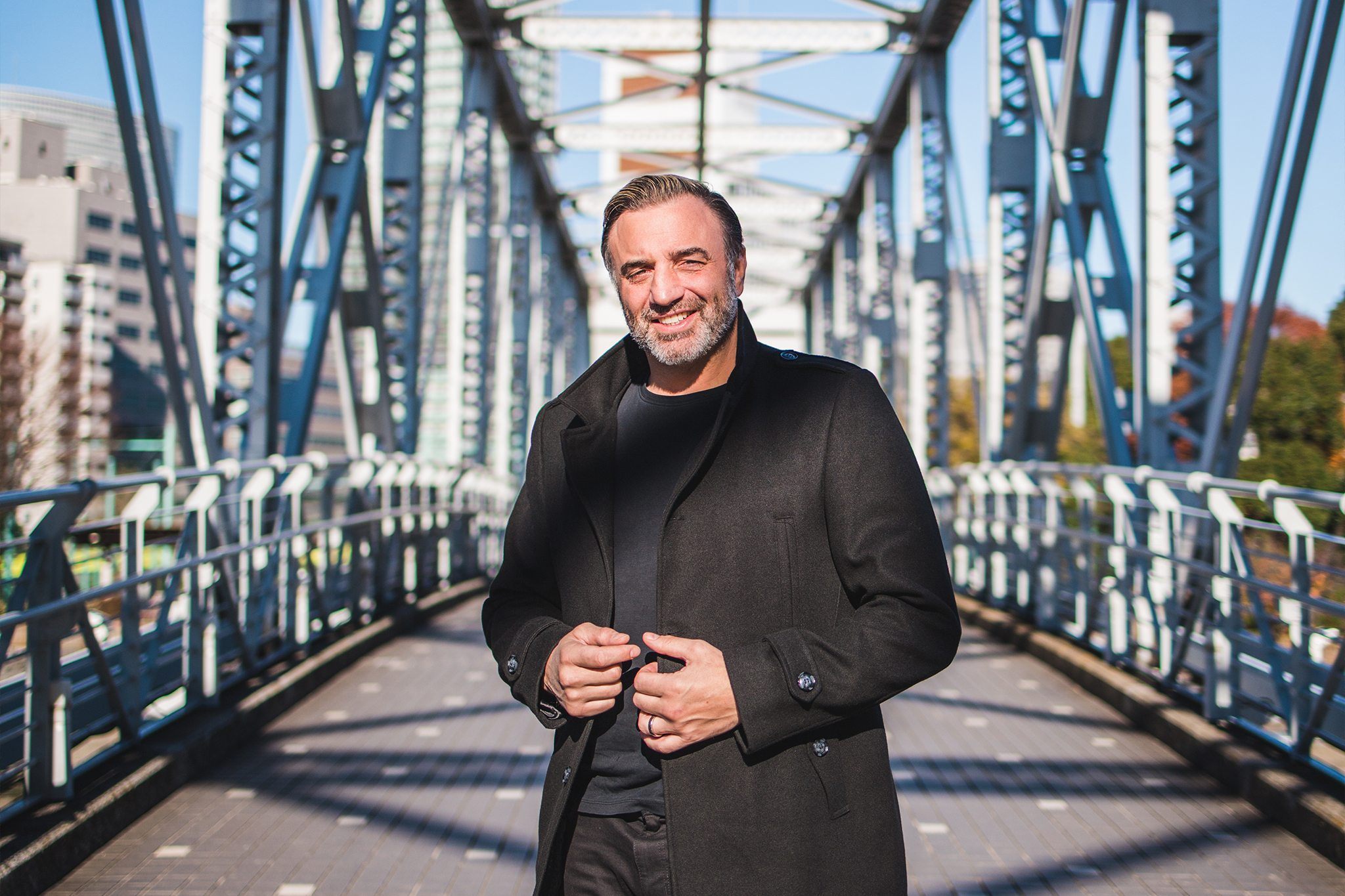
Photo by Andy Cheng
Aside from that fight all those years ago that led you down this path, have there been any specific moments that you felt your life really changed?
I would definitely say CrossFit. It was 2009 when a guy from Reebok called me, and I had no idea what CrossFit was. They said they liked my story, liked me and were looking for a local ambassador. They had a package deal for me to open up my own gym, and they’d supply all the equipment. At the time, I was completely broke and struggling. I was working for my friend’s company as a translator to make ends meet. I saw the potential for growth in CrossFit. It changed my life: I went from being dependent on something to becoming my own businessman.
You run the YouTube channels Junk Food Japan and The Tokyo Show. Why did you get into YouTube?
I actually started YouTube 10 to 15 years ago when nobody really knew about it. I made around 200 videos of me just talking to the camera, and it was terrible!
The gym was closed [at the start of the pandemic], so I started watching more YouTube, got inspired to try new things, and learned about editing and producing videos.
One of my CrossFit gym members knew I was doing YouTube and got me in touch with Chris Broad and Ryotaro Sakurai. Obviously, martial arts was the main option, and I also wanted to do something I could just have fun with. “Burgers and Beers” was my idea. We thought about it as a team, and it became Junk Food Japan.
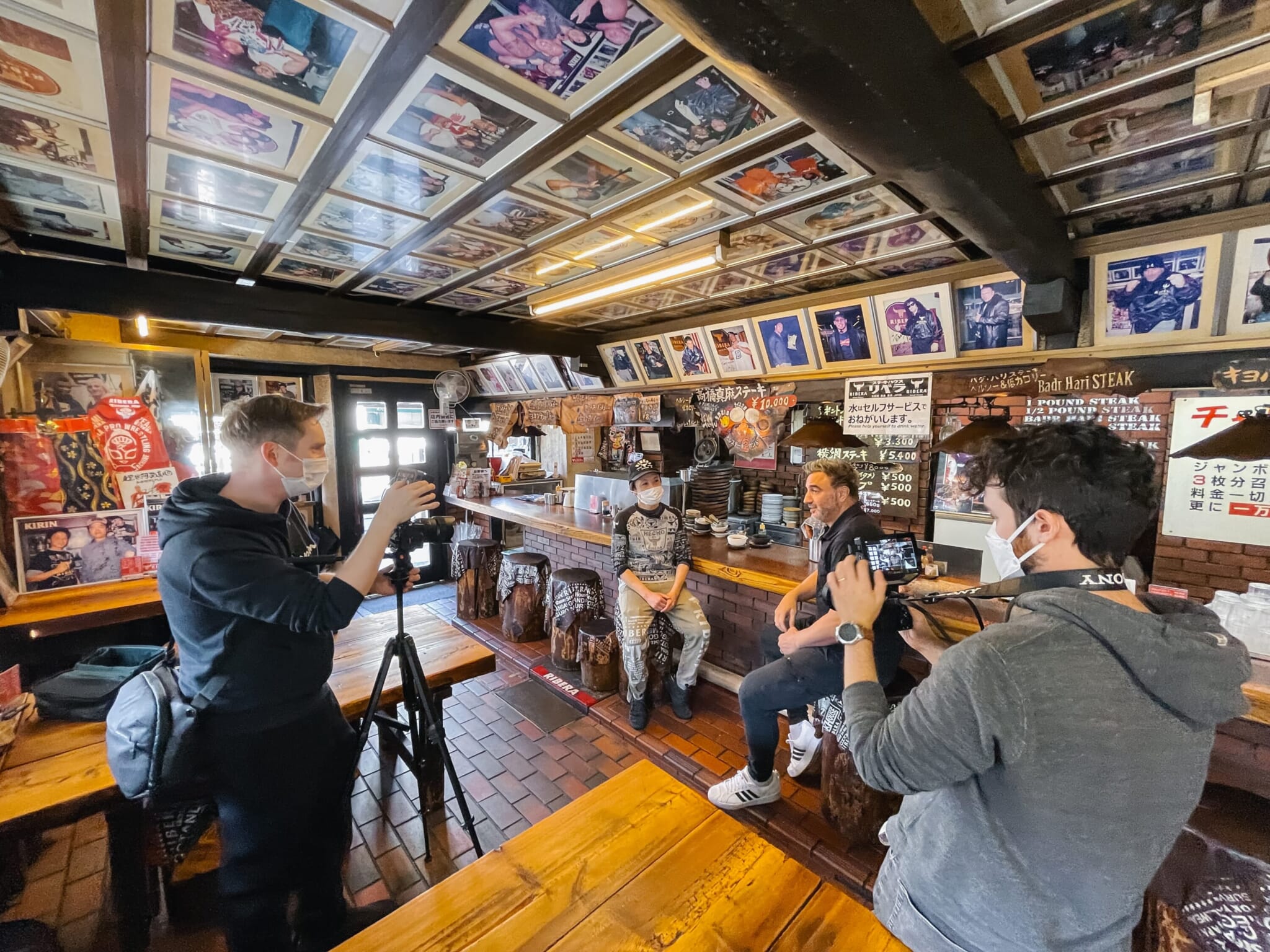
Photo by Junk Food Japan
Do you have any upcoming plans aside from your second book?
As a team and brand, we’re trying to make investments in children’s education so we can combine it with physical education. Also, I’m turning 50, and I want to inspire people around my age to have something, whether it’s golf, gym, junk food or something else.
Looking back at your career, your achievements: What’s your personal highlight?
Actually, it has nothing to do with fighting. Last year, we went back to Denmark to see my mom. She said, “I’m really proud of you.” She saw how my life has changed over the three decades I’ve been in Japan. She saw how truly happy I was [in Japan] and with my wife, Angela.
What has living in Japan been like? Do you see yourself living here for the foreseeable future?
I’ve been here for nearly 32 years. I’ve been so fortunate to have gone through many ups and downs in life and still to have come up on the winning side. I have been down to zero money in the bank with a family to support. Japan has been very kind to me but also very harsh. But once I really started to understand the language and culture, I realized part of me will always be here no matter where I end up. There is no “goodbye Japan forever.”
Subscribe to Junk Food Japan on YouTube.

